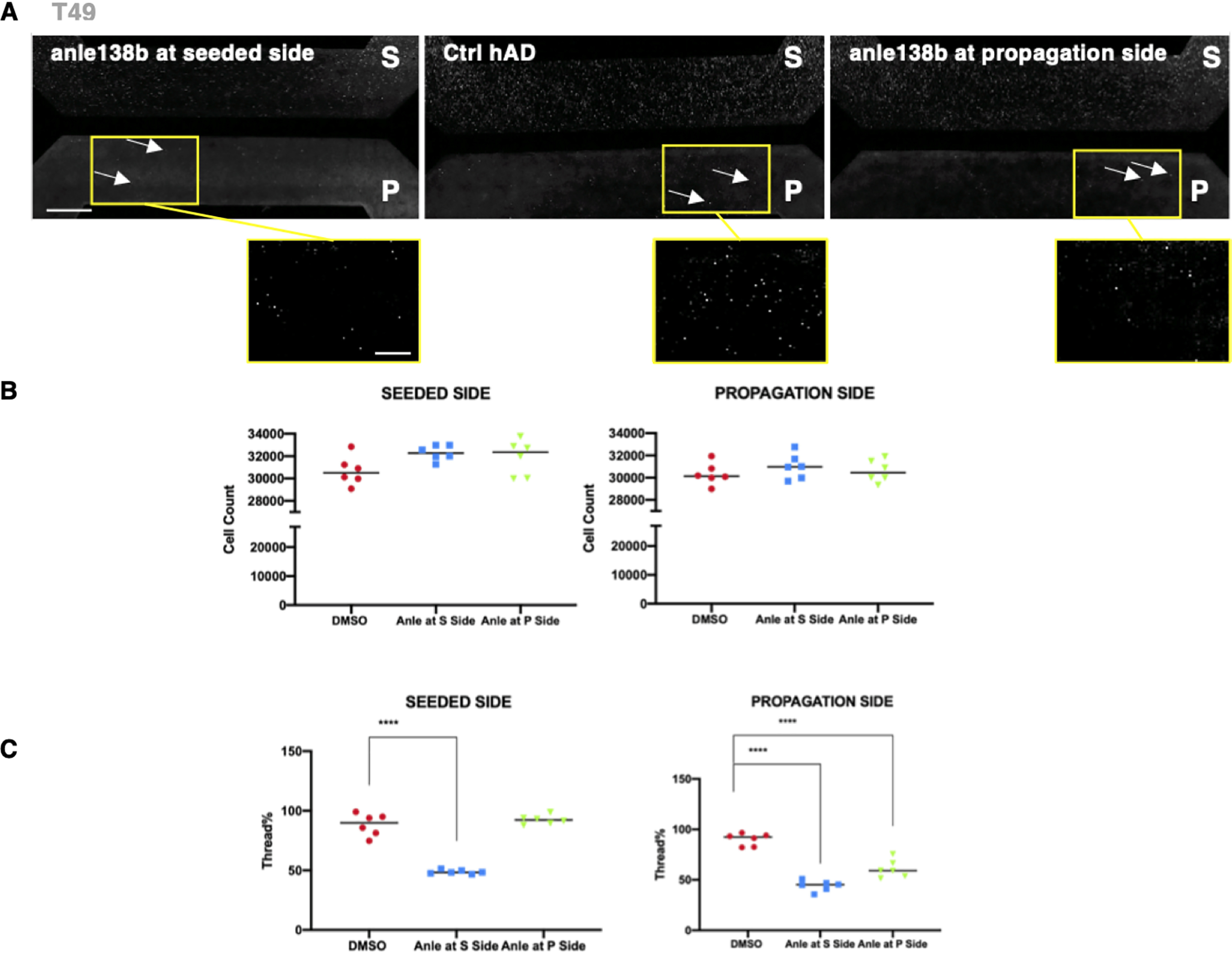Figure 9.

Addition of a small molecule aggregation inhibitor to RCNs in the microfluidic model results in inhibition of both aggregation and propagation. A, representative images of tiled montages of each two-chamber microfluidic device for each tested condition: anle138b added at the seeded compartment on the left, the DMSO hAD-seeded control (Ctrl) in the middle, and the anle138b added at the propagation compartment on the right, which demonstrates that the small molecule aggregation inhibitor anle138b had no effect on the number of Hoechst-positive cells and inhibited both the aggregation and propagation of neuritic thread-like T49 inclusions. Figure bar, 500 μm; zoomed image bar, 250 μm. B, there were no changes in the cell numbers between the DMSO control and the anle138b treatments when cells were counted for each microfluidic compartment. C, quantification of these results demonstrates a decrease of the number of T49-positive neuritic thread-like aggregates as a result of the anle138b treatment. Statistical evaluation was performed using one-way ANOVA followed by Dunnett's multiple comparison test (p < 0.05); the results are represented as means ± S.E. of two independent experiments with three replicates for each condition (thread % = 100 × Thread count/cell count). Zoomed images are indicated by yellow squares.
